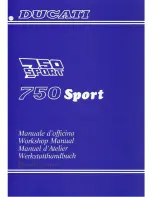
32
a
b
c
d
Suspension forks
Lots of MERIDA bikes, in particular MERIDA mountain
bikes, MERIDA cross and MERIDA trekking bikes, are
equipped with suspension forks
(a)
. This feature gives
you better control of your MERIDA bike when riding
cross-country or on rough road surfaces and ensures more
ground contact for the tire. The (shock) loads on you and
your MERIDA bike are noticeably reduced. Suspension
forks differ in their types of spring elements and damping.
Suspension forks normally work with air spring elements
or with coil springs. Damping is usually done by oil. To work
perfectly, the fork has to be adjusted to the weight of the
rider, the sitting posture and the intended use
(b)
. Be sure to
have this adjustment carried out by your MERIDA dealer at
the time of delivery. For more information see the chapter
“Suspension forks” in your comprehensive MERIDA user
manual as well as the instructions of the suspension fork
manufacturer on the enclosed MERIDA CD-ROM.
G
The suspension fork should be set up and ad-
justed in a way that it does not reach the end
of its travel, i.e. bottom out, unless in extreme
cases
(c)
. A spring rate which is too soft (air pressure is too
low) can usually be heard or felt as a “clunk” type noise.
This noise is caused by the sudden complete compression
of the suspension fork as it reaches bottom out. If the sus-
pension fork frequently reaches bottom out, it will sustain
damage over time, and so will the frame.
G
A too strong damping of the suspension fork
can result in a sluggish rebound movement with
a rear shock that will not recover when exposed
to a quick series of impacts. Risk of an accident!
G
Do not turn any bolt on your suspension
fork, particularly not with tools, in the vague
hope of adjusting it somehow. You could be
loosening the fastening mechanism, thus provoking an
accident. All manufacturers normally mark adjustment
devices with a scale or with “+” (for stronger damping/
harder suspension) and “-“ signs.
G
Suspension forks are designed to absorb
shocks. If the fork is too rigid and jammed,
the terrain-induced shocks pass directly into
the frame without any damping. This could damage the
suspension fork itself as well as the frame. If your fork
has a lockout mechanism
(d)
, do not activate the lock-
out function when riding in rough terrain, but only when
riding over smooth terrain (roads, field tracks).
I
Suspension fork manufacturers normally
include instructions with their deliveries.
You find these instructions on the enclosed
MERIDA CD-ROM. Read these carefully before chang-
ing any settings or doing any maintenance work on
your suspension fork.
I
More information on adjusting and mainte-
nance is available on the internet at
www.srsuntour-cycling.com www.magura.com
www.ridefox.com
www.rockshox.com
www.manitoumtb.com www.rst.com.tw
www.xfusionshox.com www.dtswiss.com
Содержание EN 14764
Страница 55: ...MERIDA com...
















































